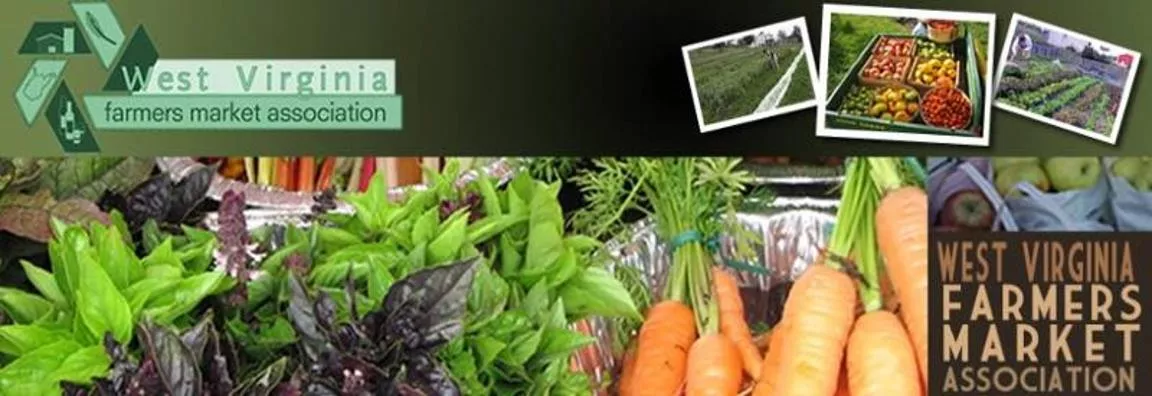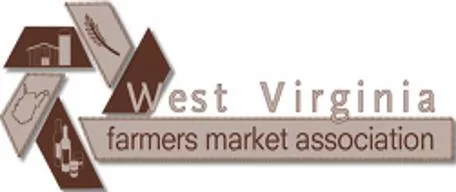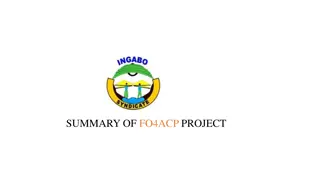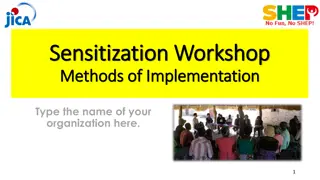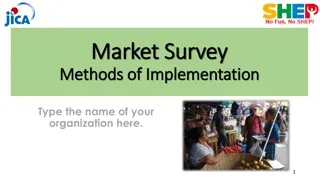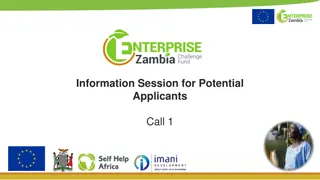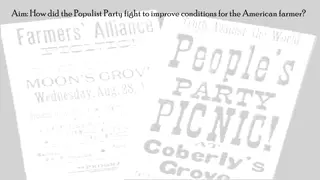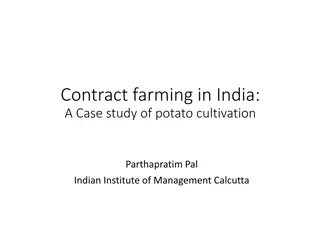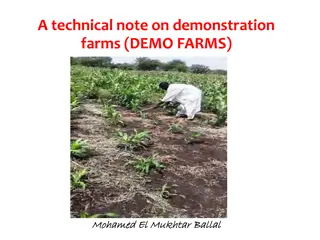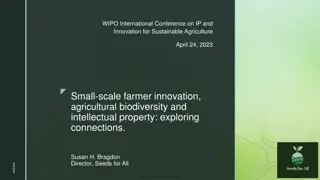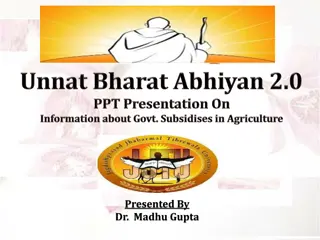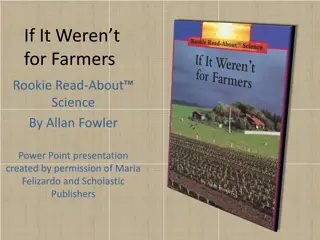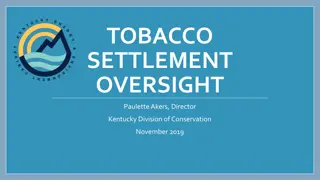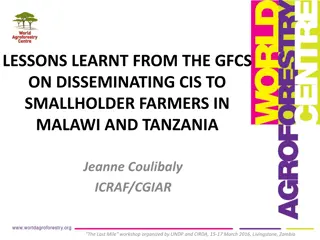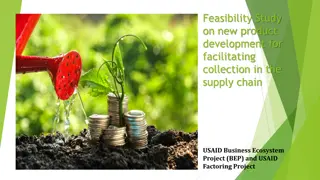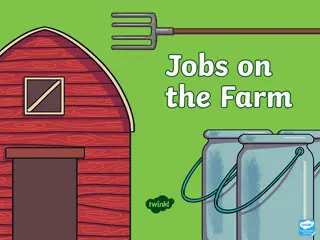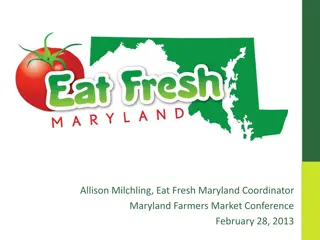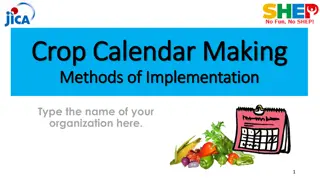How to Start a Farmers Market: A Step-by-Step Guide
Learn the essential steps to start a successful farmers market with insights from the West Virginia Farmers Market Association. Discover the benefits to small/medium-sized farm operators, consumers, the community, and the local economy. Follow the ten basic steps, from holding stakeholder meetings to promoting the market, and create a thriving hub for fresh produce and community engagement.
Download Presentation

Please find below an Image/Link to download the presentation.
The content on the website is provided AS IS for your information and personal use only. It may not be sold, licensed, or shared on other websites without obtaining consent from the author.If you encounter any issues during the download, it is possible that the publisher has removed the file from their server.
You are allowed to download the files provided on this website for personal or commercial use, subject to the condition that they are used lawfully. All files are the property of their respective owners.
The content on the website is provided AS IS for your information and personal use only. It may not be sold, licensed, or shared on other websites without obtaining consent from the author.
E N D
Presentation Transcript
So You Want to Start a Farmers Market? A How-To Guide provided by the West Virginia Farmers Market Association West Virginia Farmers Market Association - 2012
2 Why start a market? Who will Benefit? Small/medium size farm operators Consumers The community The local economy Still interested...? West Virginia Farmers Market Association - 2012
3 There are 10 Basic Steps to Starting a Farmers Market: Have a meeting for interested stakeholders Outline goals and craft mission statement Select a location Recruit vendors Agree upon a governance structure Establish by-laws Identify a market manager Develop operational guidelines and vendor contracts Create a budget strategy Promote the market 1. 2. 3. 4. 5. 6. 7. 8. 9. 10. West Virginia Farmers Market Association - 2012
4 Step #1 - Have a meeting for interested stakeholders Host a meeting for those in the community interested in starting a farmers market a good time to start this process is mid-winter when producers are not busy at the market, but still have enough time to adjust their planting for next season Consider inviting: area producers (future vendors), active community volunteers, local governmental officials, county extension agents, neighborhood residents, etc Discuss perceived interest/need for the market in your community Collect names and contact info, and set a schedule for regular meetings West Virginia Farmers Market Association - 2012
5 Step #2 Outline goals and craft mission statement Agree on goals for the market to guide your planning process: Are you a group of farmers whose primary goal is expanding your direct marketing opportunities for vendors? A community organization who is interested in public health and/or economic development? Both? Craft a mission statement that sets objectives that will further those goals. West Virginia Farmers Market Association - 2012
6 Step #3 - Select a location Location, location, location! A good location for a farmers market will: Be safe Be aesthetically pleasing Be accessible and have plenty of parking Be in proximity to the customers you wish to target in order to meet the goals established for your market West Virginia Farmers Market Association - 2012
7 Step #4 - Recruit vendors Start actively recruiting potential vendors Your local extension agent can be a source of contact info Tell them why this is a good opportunity have facts to back up your claims (ie. A traffic count on streets adjacent to location or a survey of local residents expressing desire for the market, etc.) Ideas for vendor recruitment events: Invite them to a regular committee meeting Information session at the extension office Host a local foods dinner and invite area producers to solicit their input on planning West Virginia Farmers Market Association - 2012
8 Step #5 - Agree upon a governance structure Now that you have both community stakeholders and future vendors involved, as well as having selected a location, it s time to adopt a formal governance structure. It is very important that vendors are a part of this structure. Most markets have a farmers market board, consisting of, at minimum: President Vice President Secretary Treasurer Elect officers West Virginia Farmers Market Association - 2012
9 Step #6 - Establish bylaws Bylaws should be adopted that outline the procedures by which the board is elected and operates, and the process for how decisions are made. Good bylaws will: Further the goals for the market established by the original farmers market committee Be easy to understand and enforceable Be as simple as possible given the size and scope of the market Adhere to rules and regulations governing farmers markets that are already established by law (See WVFMA s Top Ten FAQ s for Farmers Market Rules and Regulations ) West Virginia Farmers Market Association - 2012
10 Step #7 - Identify a market manager Sometimes, when a market is new, a vendor or community volunteer will serve as the market manager; but often this is a paid position, especially as the market grows and the demands on this individual are greater. A market manager will: Be responsible for the day-to-day running of the market Coordinate the set-up and take-down of each market and monitor the condition of the site Promote and advertise the market Enforce bylaws as well as rules and regulations established by law West Virginia Farmers Market Association - 2012
11 Step #8 - Develop operational guidelines and vendor contracts These can be less formal than the by-laws, and often change from season to season, but will serve as a guide to the day-to-day running of the market. (Some markets include these in their bylaws.) Guidelines should include: Hours of operation Vendor stall arrangement Rules governing origin and/or type of produce Vendor fees Rules of the market (Smoking? Waste disposal?) These guidelines should form the basis of your vendor contracts West Virginia Farmers Market Association - 2012
12 Step #9 - Create a budget strategy Ideally, every farmers market would have a long-term business plan, but at minimum should have a season-long budget The budget should include: a) All projected expenditures Advertising costs, equipment purchases (tents, tables, etc.), utilities on site, lease or rent for site, manager s pay, liability insurance, etc b) All projected revenues Vendor fees, grant monies, local government support, fundraisers, etc. Viewing the revenue vs. expenditures will allow the market to see what they need to do to both make ends meet in the short term and to become fiscally sustainable in the long term West Virginia Farmers Market Association - 2012
13 Step #10 Promote the Market Tap into earned media opportunities by asking local radio, TV and newspapers to do stories about your market Utilize free social media networks such as facebook, twitter, blogging, etc. Invest in branding and marketing materials such as banners, rack cards and fliers Build a website with hours of operation, directions to the market, etc. West Virginia Farmers Market Association - 2012
14 Must-Have Checklist Location Market Manager Governance structure Clear and enforceable bylaws Vendor contracts Marketing materials and signage Website and Facebook page Insurance West Virginia Farmers Market Association - 2012
15 Other Helpful Resources Farmers Market Coalition Resource Library. http://farmersmarketcoalition.org/resources/resource- library Hamilton, Neil D. (June, 2002). Farmers Markets Rules, Regulations and Opportunities. National Center for Agricultural Law Research and Informationof the University of Arkansas. http://www.nyFarmers market.com/pdf_files/fmruleregs.pdf Lakins,Velma. How to Start a Farmers Market. USDA. (May 2, 2007) http://www.ams.usda.gov/AMSv1.0/getfile?dDocName=ST ELDEV3022129 WVU Extension Service. Farmers Market Vendors Guide. (July 1, 2009). http://smallfarmcenter.ext.wvu.edu/r/download/36641 West Virginia Farmers Market Association. Top Ten FAQ s for Farmers Market Rules and Regulations (2012). Coming soon! West Virginia Farmers Market Association - 2012
16 For more info, contact: Kelly Crane, Project Coordinator West Virginia Farmers Market Association 4700 MacCorkle Avenue SE WVFMA Development Team: Deaonna Crowe, Salem Farmers Market Suite 101 Charleston, WV 25304 Phone: 304-542-3331 Coordinator@wvfarmers.org http://wvfarmers.org/ Larry Lower, Berkeley Springs Farmers Market Savanna Lyons, West Virginia Food and Farm Coalition Janet McDaniel, Monroe Farmers Market West Virginia Farmers Market Association - 2012

 undefined
undefined




